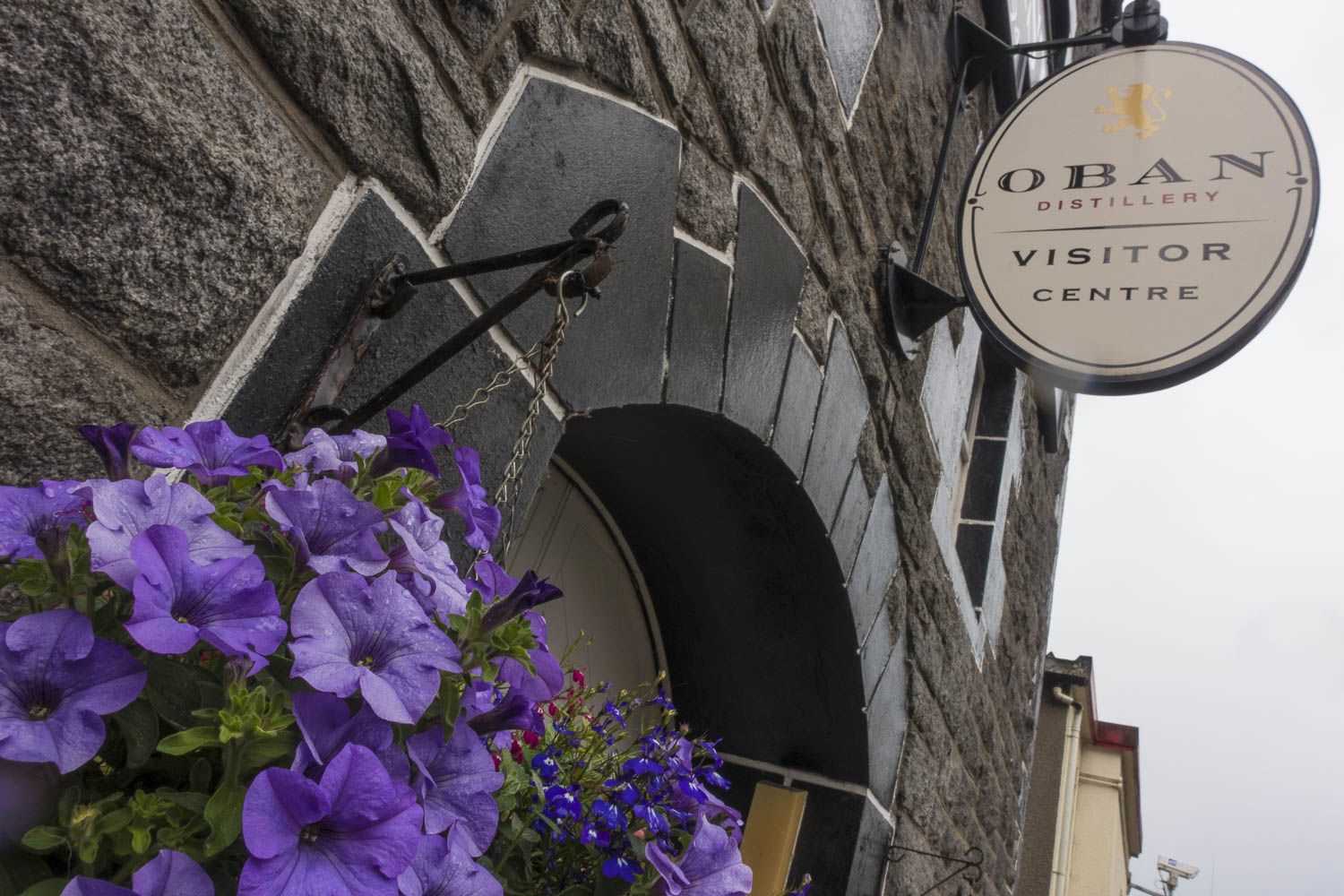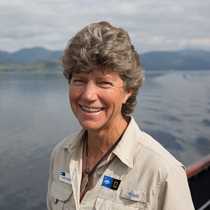Lord of the Glens remained in Oban until late morning, giving us the opportunity to explore the town. Oban is a busy place: it provides services to the surrounding rural areas and serves as a transportation hub, where ferries, busses, and trains converge. The town also has much to offer the visitor, from interesting shops and pleasant walks, to McCaig’s Tower (also known as McCaig’s Folly) and of course, the distillery. McCaig’s Tower stands above the town, looking like a small, ruined Roman coliseum. It was constructed by the wealthy banker John Stuart McCaig starting in 1895, but was left unfinished with McCaig’s death in 1902. A few guests took the opportunity to walk up to McCaig’s Tower and take in the extensive views over the sea towards Mull, where we came from on yesterday’s journey. Others decided to do some shopping in Oban, or join the distillery tour.
The Oban Distillery tour was an education in whisky making. The distillery is one of the oldest in Scotland, established in 1794 before Oban was even a town. The buildings remain much the same as they were in the 1890s when the business was renovated and updated. The tour ended with a nice sample of one of the Distillery’s products – a wee dram, as they say.
Later this morning we sailed across Loch Linnhe, headed towards the Caledonian Canal, our last sail in the open ocean. As we journeyed towards the canal, Stewart gave a talk on Scotland’s geology. He covered the history of geology in Scotland, some basic geologic processes, and how those processes came together to create Scotland’s landscape of today.
After lunch, the boat entered the Caledonian Canal. Engineered by Thomas Telford, the canal was constructed between 1803 and 1822. The canal route follows the Great Glen’s natural fault line with its series of lochs, including 22 miles of manmade canal and 38 miles of open lakes, with a total of 29 locks to pass through. We will follow the canal now until our final destination in Inverness. We put into our berth for the night at Corpach just past the first lock into the canal, with the mighty Ben Nevis looming overhead, its summit lost in the clouds. Ben Nevis is the highest mountain in the U.K. and stands at 4412 feet.
Our afternoon excursion took us to Glenfinnan Monument at the head of Loch Sheil. It was here in 1745 when Bonnie Prince Charlie first raised his standard in his campaign to reclaim the throne for the Stuart Dynasty. This third Jacobite uprising ended in the disastrous defeat at Culloden in 1746. Glenfinnan is now also known as the site of the train viaduct made famous for its appearance in the Harry Potter movies. Despite the showery afternoon, some of our group chose to do a hike through the mountain glen, starting from above the Monument and walking down past the viaduct, with views down to the Monument and across Loch Sheil. Others took the time to enjoy the Monument’s visitor center and nature walks along the Loch’s shore.
The day ended with a visit from Alistair Gibson, the Estate Manager for the Glenfinnan Estate. Alistair gave an after-dinner talk describing the complex management of a modern-day Highland Estate. Deer stalking (aka hunting), timber production, and tourism are all part of the everyday tasks on the estate. This informative evening program gave us an insight into the Highland culture of today.









